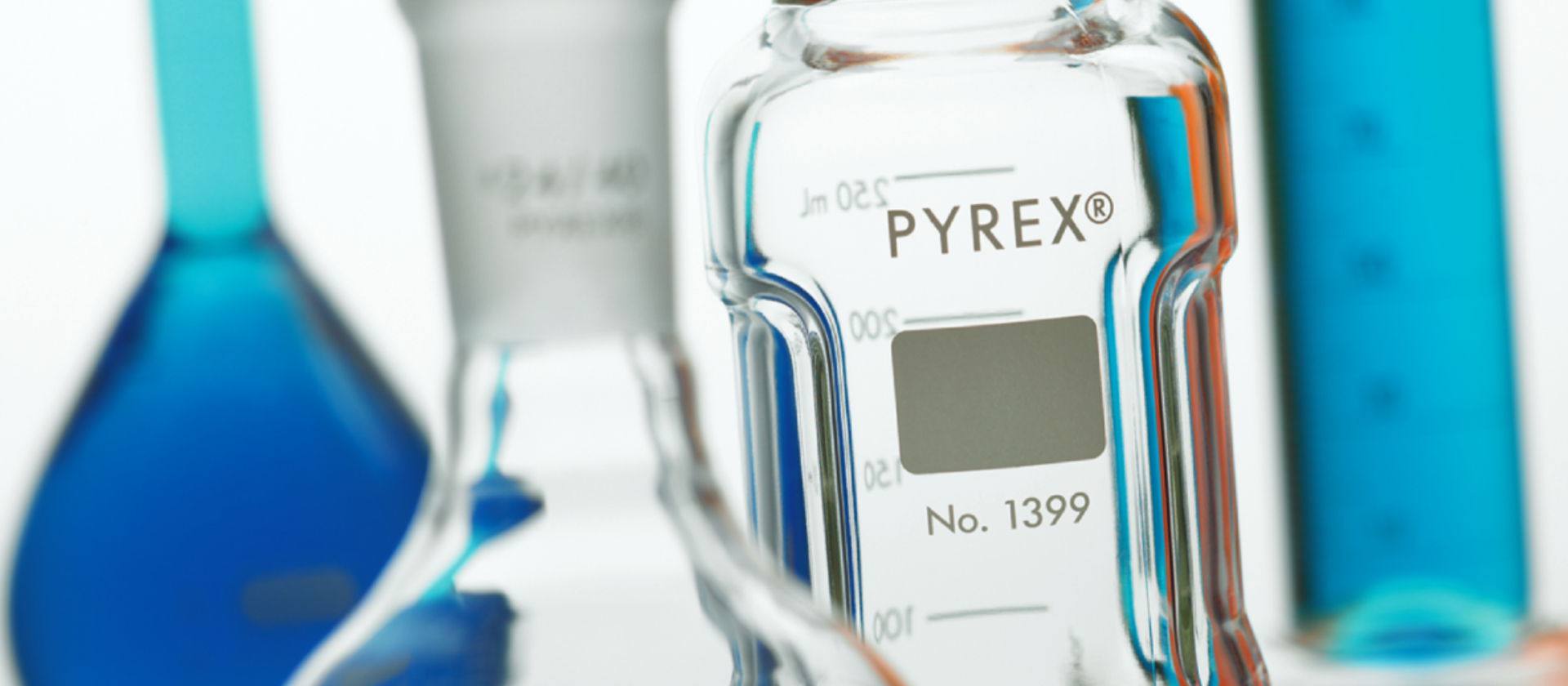Safely Autoclaving PYREX® Laboratory Glassware
Autoclaves are widely used to sterilize instruments, glassware and plasticware, solutions and media, and to decontaminate biological wastes. Because of the physical hazards (e.g., heat, steam, and pressure) associated with autoclaving, extra care must be taken to ensure their safe use.
Each autoclave has unique characteristics and operating requirements. Review and understand the owner’s manual for your piece of equipment before using any autoclave for the first time and as needed thereafter. Also, follow all of your institution’s safety regulations for autoclaving and sterilizing your instruments.

Safety Practices for Autoclaving PYREX® Glassware
Corning recommends the following safety practices when autoclaving lab glassware.
What can I autoclave?
- Use only borosilicate glassware, such as PYREX glass, which can better withstand the stresses of high autoclave temperatures and pressures.
- Never autoclave items containing corrosives (e.g., acids, bases, phenol), solvents or volatiles (e.g., ethanol, methanol, chloroform) or radioactive materials.
- Check any plastic caps, tubing, or other items to ensure they can be safely autoclaved with the glassware.
Loading Autoclave
- Load the autoclave properly as per the manufacturer’s recommendations.
- Individual glassware vessels should be placed within a heat-resistant plastic or metal tray on a shelf or rack and never placed directly on the autoclave bottom or floor. There should always be space (>5 cm) left between glass vessels to give them room to expand during heating and to prevent them from hitting other vessels when entering or leaving the autoclave.
- Add 1/4 to 1/2 inch of water to the tray so the glassware will heat more evenly.
- Fill glassware only half full with liquids to be sterilized. Take into account the volume of liquid to be autoclaved. A 2-liter flask containing 1 liter of liquid takes much longer to sterilize than four 500 mL flasks each containing 250 mL of liquid.
- Do a test run when autoclaving larger volumes of liquid to make sure the liquid has reached 121ºC. Suspend an autoclave thermometer (with a thin wire) in the middle of the liquid-filled container to record the highest temperature reached. Then check its reading after the autoclave run is finished, if the temperature is too low then the run time will need to be increased or the volume will need to be reduced.
- Large heavy glassware, such as 3L or larger spinner flasks, 5L or larger bottles, and carboys, should have a small amount of distilled water placed inside them to help generate steam when they are being sterilized dry in an autoclave.
- Never autoclave a sealed vessel containing liquids as this may result in an explosion of super-heated liquid and steam during the cycle or when the vessel is opened.
- To prevent bottles from shattering during pressurization, the caps of vessels with liquids must be fully loosened before loading. Always use the slow exhaust or liquid cool cycle when autoclaving liquids to prevent a liquid boil over which can result in loss of content.
Unloading Autoclave
- It is not recommended to tighten caps on vessels immediately after autoclaving as the vacuum resulting from the cooling of the steam in the vessel can cause the cap or vessel to shatter. This is especially important on larger vessels. Caps with liners may have their liner sucked into the vessel if the cap is not loose enough on the vessel opening.
- Do not put hot glassware, especially large bottles, from an autoclave (or another heat source) on a cold benchtop. The stress that is induced will often cause the vessel bottom to crack or fall off releasing its hot contents.
Personal Protection
- Wear heat-resistant gloves when opening the autoclave door after a cycle. At a minimum, when removing items from an autoclave, a rubber apron, rubber sleeve protectors, and heat-resistant gloves should be worn.
- Wait 5 minutes before removing dry glassware from the autoclave, and wait 10 to 20 minutes for glassware containing liquids. The larger the volume of liquid, the longer you should wait. Liquids removed too soon may boil and overflow the vessel, burning the operator.
- Let the glassware cool for 15 minutes before touching it with ungloved hands for non-liquid loads.
- For liquid loads, let liquids stand for a full hour before touching them with ungloved hands. Be sure others in the area know a heat hazard is present.
Safety Practices for Autoclaving PYREXPLUS® Glassware
PYREXPLUS glassware has a protective vinyl coating that requires some additional precautions for autoclaving. PYREXPLUS glassware can be successfully sterilized repeatedly using liquid or dry cycle sterilization, which involves no vacuum or low vacuum (less than 5 inches mercury) cycles.
- Sterilization time should not exceed 15 minutes at 121°C (250°F).
- It is better to use a slow cool cycle for venting rather than fast venting to reduce the chance that steam or air pockets will form between the glass and the coating.
- Drying time should not exceed 15 minutes at 110°C (230°F). The actual cavity temperature of the autoclave should be checked to be sure the autoclave temperature does not exceed the recommended sterilization and drying temperature.
- Vessels should not be allowed to touch each other during autoclaving.
- Should the coating appear clouded due to dissolved moisture, simply let the piece dry overnight at room temperature or briefly heat it to 110°C (230°F).
















